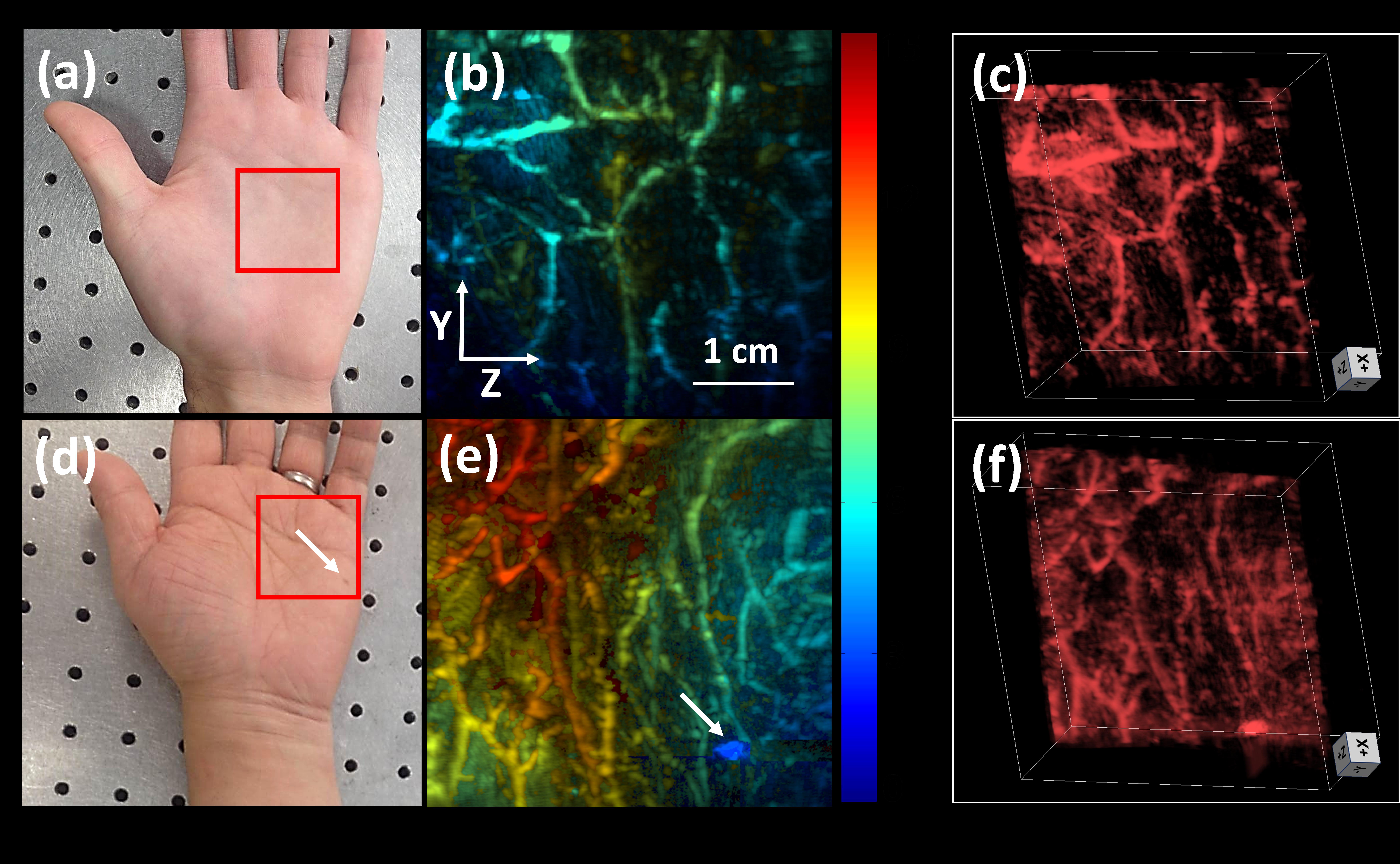Faster 3D Photoacoustic Tomography with Improved Elevation Resolution
A solution to the problems posed by both traditional 3D PAT imaging and biopsies for dense breast tissue and skin imaging.
Traditional scanning schemes for three-dimensional photoacoustic tomography (PAT) have failed to address the issue of long scanning times and low elevation resolution, contributing to patient discomfort and limiting the practical application of 3D PAT. In conventional linear-array PAT systems, photoacoustic waves coming from outside a narrow focal zone are not received by the transducer. This lack of elevation information at the receiving aperture limits the corresponding spatial resolution that can be imaged and the speed of scanning.
This technology represents an improved design, giving up an up to four times increase in the elevational resolution of the device that results in significantly shorter scanning times and an improved 3D image versus conventional PAT imaging.
This technology uses a thin metal slit at the PAT array to diffract and focus the photoacoustic waves received by the transducer. The thin slit design allows waves coming from outside of the focal zone to reach the transducer, improving the field of view of the receiving aperture and resulting in up to four fold (4x) improvement in elevational resolution versus traditional scanners. A proprietary algorithm is used to rapidly reconstruct the 3D image, and this in conjunction with the increased field of view increases the speed at which imaging can be performed. A 3.8 x 4.0 cm 2 area can be imaged within 40 seconds, at dramatically increased elevational resolution.
This technology can potentially reduce patient discomfort while increasing the accuracy of diagnoses, particularly in dense breast tissue, versus traditional PAT, X-ray mammography and ultrasound. It may also eliminate the need for invasive biopsies in skin cancer diagnosis.
 Copyright SUNY Research Foundation 2017
Copyright SUNY Research Foundation 2017
- Non-invasive, no ionizing radiation
- Improved imaging in dense tissue vs mammogram
- Faster scanning speeds
- Higher resolution images - 4x increase in elevational resolution
- Less patient discomfort
- Dense breast imaging
- Skin cancer imaging
- Diabetic foot imaging
US National 15/781,329 granted March 8, 2022 US11266315B2
- Working laboratory prototype
- TRL4 / TRL6
Available for licensing or collaboration.
Patent Information:
| App Type |
Country |
Serial No. |
Patent No. |
Patent Status |
File Date |
Issued Date |
Expire Date |
|